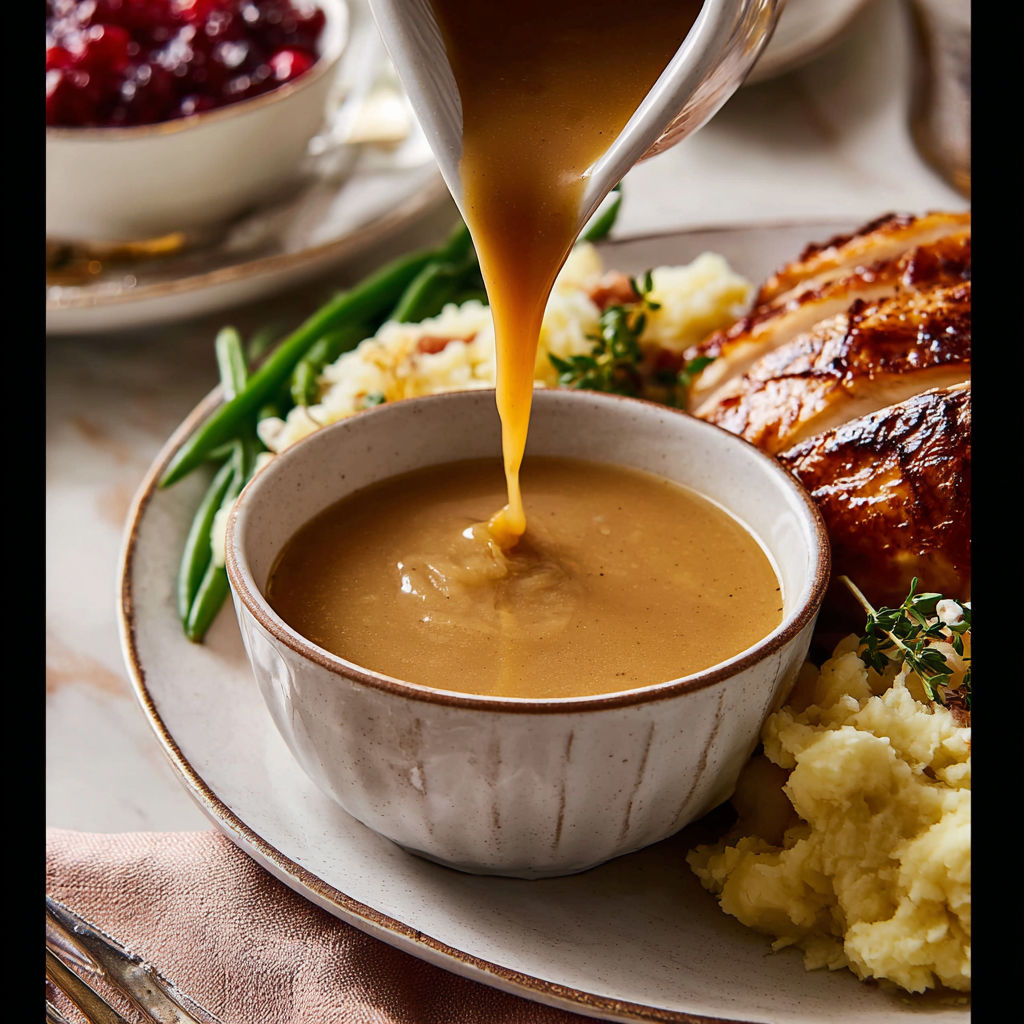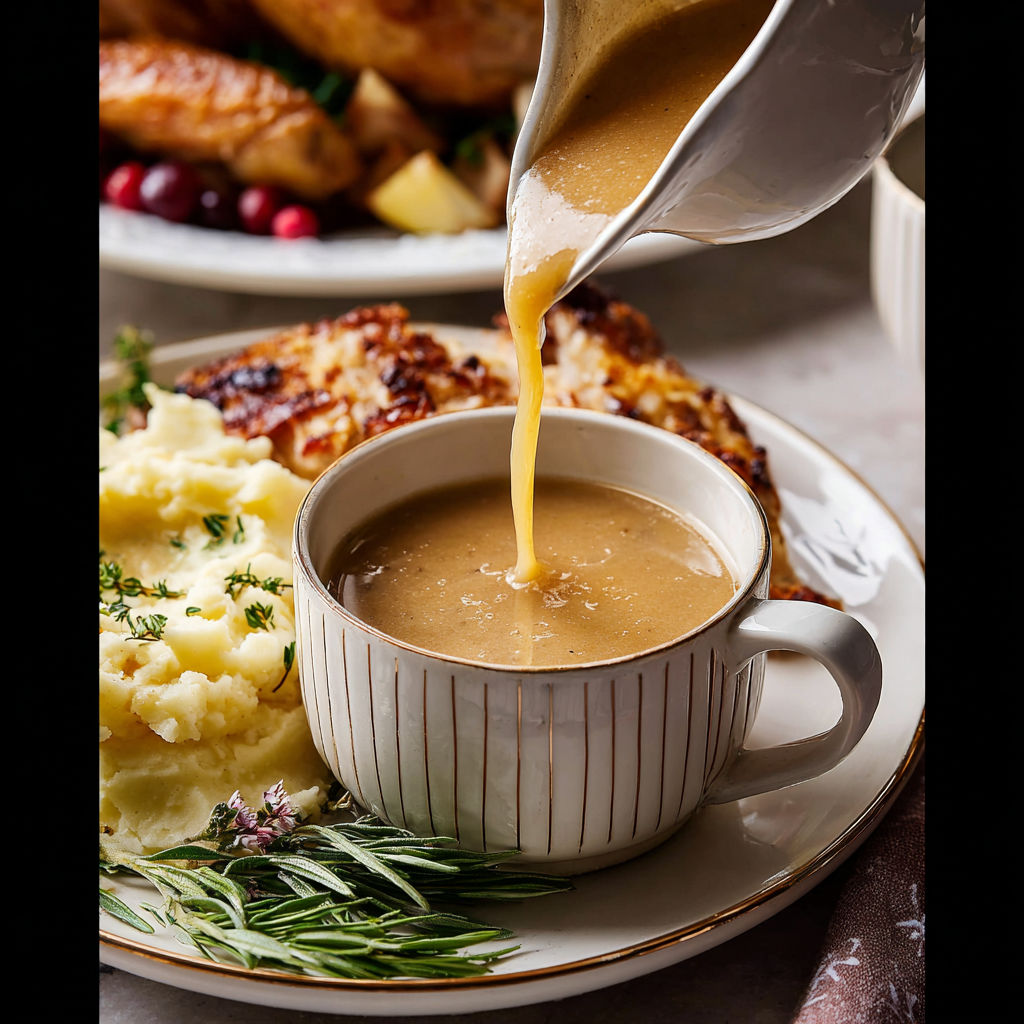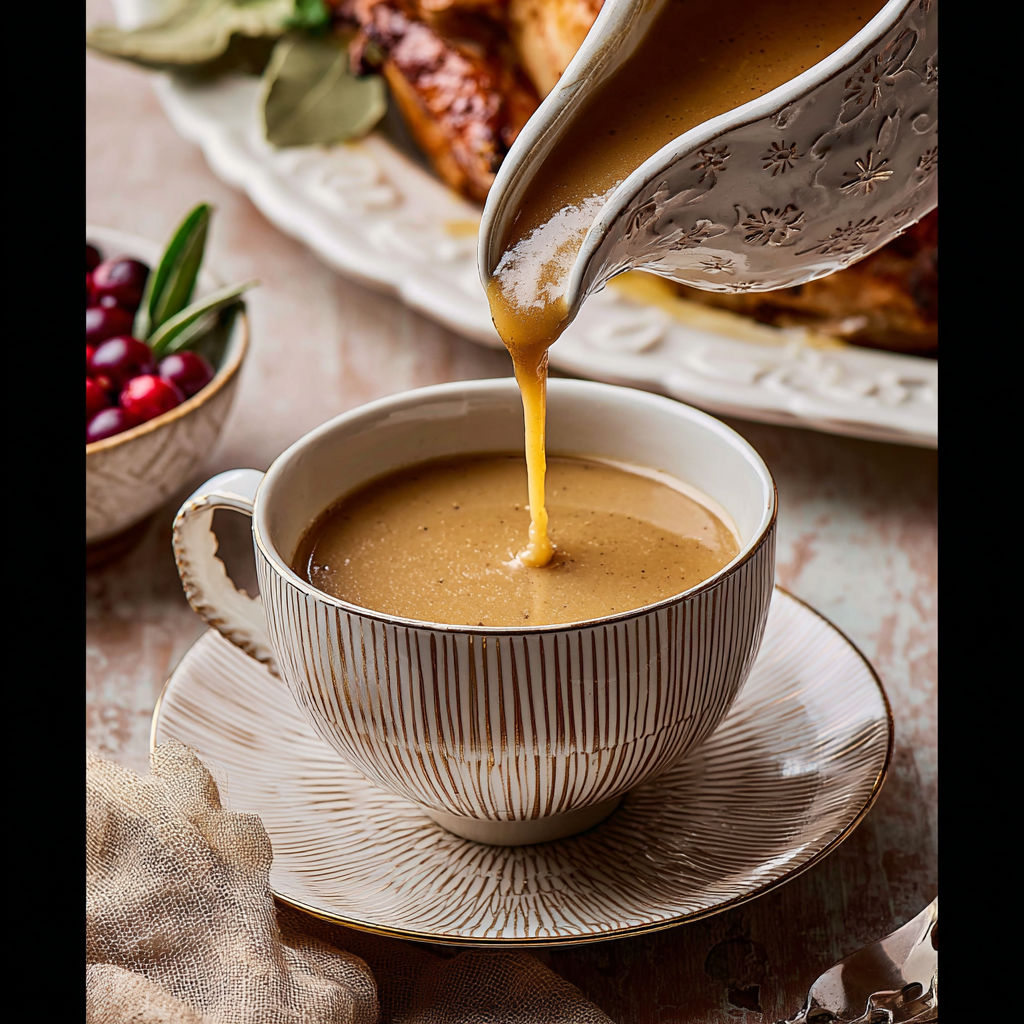 Pin
Pin
Few things spell Thanksgiving quite like a luscious homemade gravy poured over turkey and mashed potatoes. This easy turkey gravy from drippings is all about capturing those rich, savory flavors straight from your roasting pan and turning them into the silkiest, most delicious gravy ever. Whether it is your first time making gravy or you are the family pro, this foolproof recipe takes you step by step—no lumpy gravy nightmares here.
I still remember my first Thanksgiving hosting when this gravy saved my entire meal. Even the pickiest eaters asked for seconds and now it is a staple every single year in our home.
Gather Your Ingredients
- Unsalted butter: Brings a velvety richness and depth, use the freshest butter for best flavor
- Shallot: Finely diced gives a hint of sweetness and complexity, a quality shallot should feel firm with shiny skin
- All-purpose flour: Your thickener for that classic gravy body, sift before measuring for a smooth roux
- Turkey or chicken stock: Makes your gravy lush and savory, homemade if possible or use low-sodium for control
- Turkey drippings: Pack pure roasted flavor, skim off excess fat but leave a little for taste
- Kosher salt and ground black pepper: For balance and punch, always freshly grind pepper if you can
How to Make It
- Prep the drippings:
- Carefully pour your turkey drippings into a large liquid measuring cup. Skim off most of the fat with a spoon but leave a bit for flavor. Top off your drippings with turkey or chicken stock to make three cups total liquid.
- Sauté the shallots:
- Set your roasting pan across two burners on medium-low heat. Add the butter and let it melt, then sprinkle in your diced shallot. Sauté for around three to four minutes, stirring occasionally until soft and fragrant.
- Make the roux:
- Sprinkle in all the flour over the softened shallots. Whisk constantly for two to three minutes until the mixture turns golden and thickens a bit. This helps get rid of any raw flour taste and creates that perfect smooth gravy base.
- Deglaze the pan:
- If any bits are stuck to the bottom, pour in a little extra stock or white wine. Let it bubble for a minute and whisk to pull up all those browned pieces—these are packed with flavor.
- Add the liquid:
- Slowly pour your reserved drippings and stock mixture into the pan, whisking all the while. This step keeps your gravy lump free. Bring it up to a gentle simmer.
- Simmer and season:
- Let your gravy bubble for about eight to ten minutes, whisking often. It will thicken to a pourable, rich consistency. Taste, add kosher salt and black pepper as needed.
- Strain and finish:
- For an ultra-smooth gravy, place a fine mesh strainer over a bowl or jug and pour through, pressing out every bit of sauce. Serve hot over turkey, stuffing, and potatoes.

Hands down my favorite part is scraping up those caramelized bits from the pan—they turn every gravy batch into liquid gold. Last Thanksgiving my nephew wanted only gravy, no turkey, and proudly declared it the best part of dinner.
Flavor Boosters
If you want a bonus touch, add a splash of dry white wine just after the roux for extra depth. No shallots? Swap in yellow onions or leeks for similar sweetness. Use fresh herbs like thyme or parsley to brighten up your gravy for any season.
Serving Suggestions
Always serve hot so it flows easily over your roasted turkey and mashed potatoes. Leftover gravy is amazing on open-faced turkey sandwiches or added to pot pies.
Creative Twists
Try making this gravy with chicken or beef drippings for different occasions. For a dairy-free version, simply use olive oil in place of butter and vegetable stock instead of poultry stock.

I always keep a fine mesh strainer ready so my gravy is as smooth as can be. The biggest confidence boost comes when you master this one holiday staple and suddenly there is no looking back.
Common Questions About This Recipe
- → Can I use chicken stock instead of turkey stock?
Yes, chicken stock is a great substitute if turkey stock is unavailable. It blends well with the drippings and still provides a savory, rich base for the gravy.
- → How do I avoid lumpy gravy?
Whisk constantly while adding the flour to the butter and shallots to create a smooth roux. Gradually add the stock and drippings, whisking as you go, to prevent lumps.
- → Can I make the gravy ahead of time?
Yes, prepare the gravy in advance and reheat gently on the stovetop before serving. Whisk in a splash of stock if it thickens too much during storage.
- → How do I adjust the consistency?
Add more stock for a thinner gravy or simmer longer to reduce for a thicker texture. Stirring often helps control thickness and prevents burning.
- → What can I do if the gravy tastes bland?
Season with kosher salt and black pepper as needed. For extra depth, add a splash of white wine, herbs, or a dab of butter at the end.
